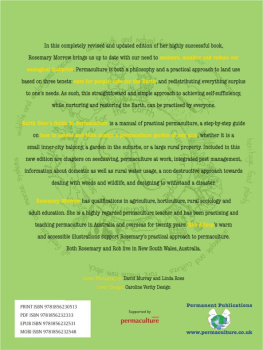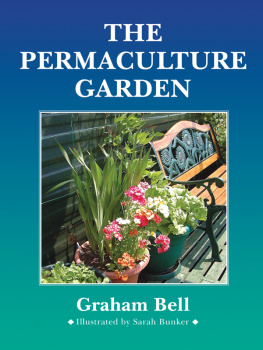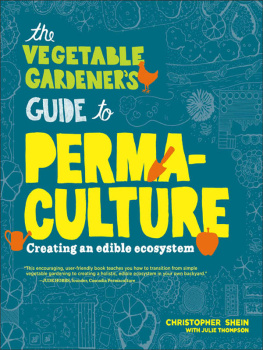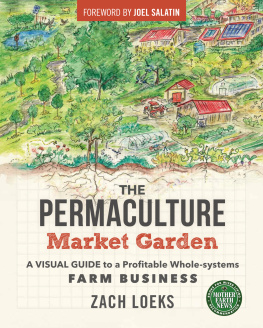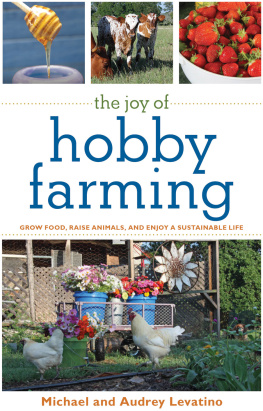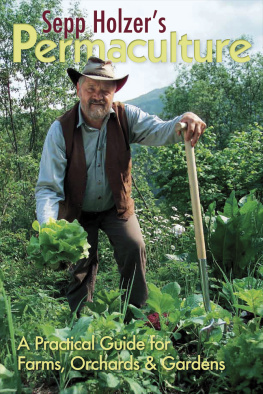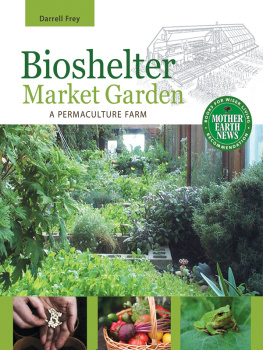T HIS BOOK IS ABOUT RELATIONSHIPS. All things, from the minerals of the earth to the energy of the sun and everything between, interact in a vast web of energy and elements, organisms and events. Each organism occupies a niche, a position within the ecosystems network. The cumulative interactions of organisms, soils, landforms and climates evolve over time to a balanced, self-regulating state.
Over the course of human history, traditional cultures around the world have found a right relationship to the rest of creation. For many thousands of years, people have been sustainably harvesting and managing ecosystems by understanding and respecting the basic laws of nature. They developed stories and myths to help them remember and pass on these laws. They recognized sacred spaces to preserve the character and health of the ecosystem. They set limits to harvests and guided their lives by the cycles of the seasons.
Today the dominant world culture is barely beginning to recognize the relationships that make up the web of life. But our education systems teach ecology as a personal value rather than a science. The environmentalist is described as a special interest rather than a person with special understanding. Concern for the natural world is viewed as a philosophy rather than scientific reality. The world is seen as a commodity to be traded. But in reality, it is a commonwealth to be shared and cared for with informed stewardship.
As a people, we have lost our native sense of place. We have become tangled in our own web of science and technology. Our tools have become our master. The challenge ahead is to rediscover our land and ourselves as a part of the great web of life. Permaculture design is a tool to help us in the journey of rediscovery.
Permaculture design is a system of land-use planning that incorporates concepts of ecosystem dynamics, ecologically appropriate technologies, and an ethic of care of the earth into a comprehensive design system. It is a process of analysis and design that can unwind inappropriate technologies and unsustainable practices. Like nature, it has its own cycles of study, design, planting, harvesting, more study, redesign and refining that can lead us, as individuals and as a society, back to a right relationship in all our relations. When we choose technologies and materials appropriate to our locale and design our cities, homes and gardens to co-exist with and enhance the natural world around us, we re-enter as co-participants into the sacred dance of life.
Finding our own personal relationships to the planet begins at home. Choices we make as consumers, including what materials we use and what food we eat, are votes we cast and investments we make in the systems that surround us. In the 21st century, we, as consumers, can make many decisions with global impact.
I hope this book will inspire some of you to think big. Together, we can create the Garden. Dream your dreams. Then live them.

A S A CHILD I WAS CAPTIVATED BY WILD FRUIT. It was my favorite of all foods, free for the harvest. Sweet, juicy raspberries and black mulberries grew along the stream in the town park. Delicious blue huckleberries and tiny, intensely flavored wild strawberries grew on my uncles farms. Teaberries were a rare treat from the woods, and tart, wild grapes hung there in the trees. Early in my life I developed a personal vision of paradise. On a family trip to Niagara Falls, as my souvenir I bought a copy of Maurice Kains Five Acres and Independence. My future homestead, I dreamed, would be filled with wild food.
Another early childhood memory is my fathers garden in the summer following the flood of 1964. I was six years old. A fast thaw of an extra heavy snow brought high water to our town. Soon, our house (safe on the hill) was full of displaced relatives. For several weeks we had cots in the living room and huge pots of food on the kitchen stove. That summer, my father planted a large garden in a vacant lot beside an uncles house. The bountiful harvest from the flood-fertilized field was mostly given away to folks still recovering from the trauma of the spring.
As a young adult, these early influences combined with a growing disillusionment with the sciences. It was the 1970s. Nuclear waste and the threat of nuclear winter, rising cancer rates, and the industrial pollution epitomized by Love Canal, were, to me, issues urgently needing to be addressed. The growing body of information on how humans were impacting the biosphere likewise required our attention.
Like many others of the time, my partner, Linda, and I sought a life closer to the earth. We learned homesteading from friends and neighbors. Old-time farmers became sources of heirloom knowledge. We devoured books and periodicals for clues on how to find the good life as described by Helen and Scott Nearing. Our free time was spent gardening, tending several goats and a small flock of chickens, learning to forage for wild foods and medicinal plants, making cider from wild apples, and canning, drying and otherwise preserving food.
Our search for right living led us to study alternative and energy technologies. We were inspired by the work of the New Alchemy Institute and their solar greenhouses and bioshelter prototypes. We were drawn to low-cost, owner-builder options and green design.
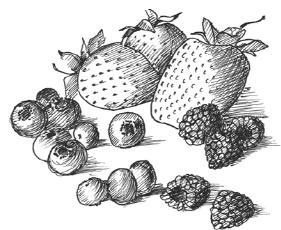
Early in the 1980s, we learned of the work of Bill Mollison and David Holmgren in permaculture design. Permaculture design pulled it all together for us, integrating all we had been studying into a coherent system of planning and development. We understood from the start that permaculture offered not an answer to the dilemma of humans on the earth, but a strategy for finding the answer. Permaculture presents a vision of humans striving for harmony with the earth. That vision provided us with a goal to move toward.
After ten years of intensive studies, six of which were devoted to learning permaculture design, I found myself teaching an annual permaculture course at a state university. The growing urge to teach by doing, rather than lecturing about the work of others, led to Linda and me making preliminary plans to create a bioshelter market garden farm. A bioshelter is greenhouse operated as an ecosystem. A market garden is a commercial-scale farm that supplies fresh produce to a regional market. We wanted our farm and bioshelter to reflect the permaculture vision. Our hopes were to create a research and demonstration facility for ecological farming in the 21st century. The farm we dreamed of would be diverse, small-scale, intensive and organic, and it would enhance the quality of life in our corner of the earth. It would be, we knew, a lifetime commitment to principles of caring for the earth.
On New Years Day 1988, many points converged in our lives: Five acres of excellent farmland were available for our use; five friends were committed to the permaculture farm project; funding assistance was available; and we had some money in the bank. We took a dive, so to speak, into the future. We have not looked back.
The story of our lives in the time since 1988 is a common one in the permaculture world. We committed all our resources and time to what was, for a while (and to some extent still is), a self-funded research project. Many people have helped us on the way. Some of them we still see daily; some early associates have moved on to other, equally interesting projects. We have weathered downpours and droughts, late frosts and heat waves, confidence and burnout. When the burnout came, something or someone always showed up to revive us: the customer who appreciated our chemical-free produce; the child fascinated with a shamrock spider in its web and a monarch chrysalis on the milkweed; the first fruit of the season; and (especially) the exhilaration of being in a sunny bioshelter on a cold winter day. Through it all, we continued to develop the farm reviewing, planning and expanding our plantings and gardens. Crop mixes were developed, relationships with customers established and ecological relationships encouraged. As you read these words were probably working on some new phase of farm development, identifying a new species, designing a new garden or greeting a new visitor. A permaculture farm is an evolving, changing thing. With thoughtful, responsible stewardship it will, each year, get closer to our vision of integration with the local ecology.
Next page


